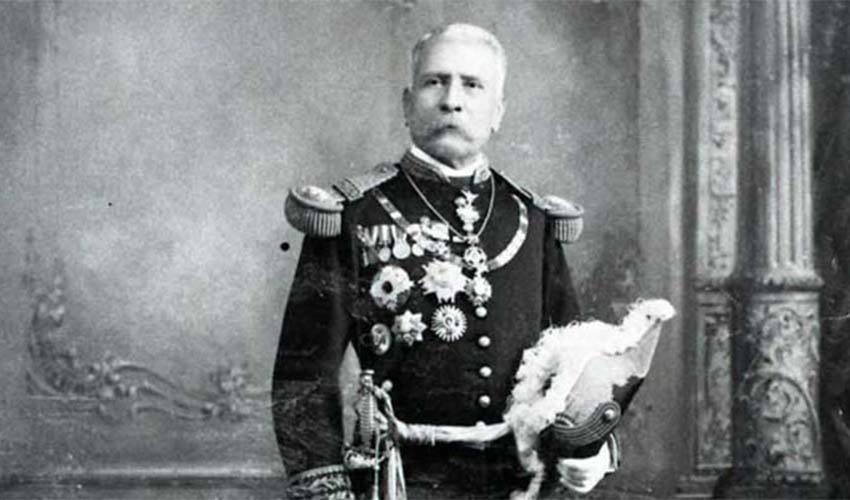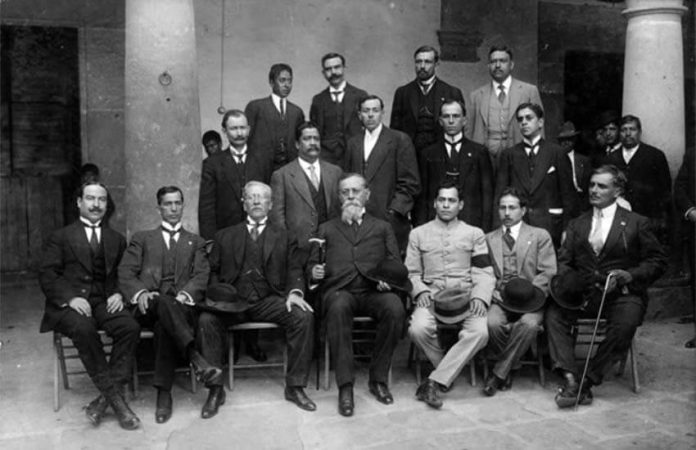Even after 18 years in Mexico, I sometimes get caught off guard by Mexico’s holidays, finding out about it only because I went to a bank or government office and found it closed.
Just so you know, they will be closed on Monday, February 7 for Constitution Day.
One of only 10 federally recognized holidays in Mexico, Constitution Day celebrates the anniversary of Mexico’s latest and current foundational document, adopted on February 5, 1917.
Why the date discrepancy? In the 2000s, Mexico began shifting its holidays to the closest Monday in order to make three-day weekends, called puentes (bridges).
When he took office, President López Obrador tried to put them back to their exact dates, but the long weekends proved too popular.

Mexico has had a number of constitutions since its independence from Spain, but the Constitution of 1917 would become important not only because it has set Mexico’s course for over a century but also because it became the model for the Weimar Constitution of 1919 in Germany and the Soviet Constitution of 1918.
This constitution has had important consequences for foreigners entering and living in the country as well.
The Constitution of 1917, born out of the Mexican Revolution, was drafted mostly by those who fought and saw the horrors of more than 10 years of civil war that followed the Revolution’s overthrow of the 30-year government of President Porfirio Díaz, with successor presidents coming to power and being overthrown in quick succession and various factions’ armies battling over who should run the country.
When Venustiano Carranza’s Constitutionalist faction finally gained the upper hand militarily, attention turned to legitimizing the war and the government to follow.
Originally, the idea was to amend the previous 1857 constitution, itself a radical document for its time. However, the Constitute Congress, the body formed to draft the new constitution, had many social and economic issues on their minds and did not want to leave them to normal political processes down the road.
It decided to set its agenda into the constitution proper. This allowed the new document to be written in a matter of months and to be more radical than it might have otherwise been.
The basic governmental structure of the 1857 constitution was preserved. The radical departure is found in many of the 136 articles that cover issues no other constitution had previously.
It is not possible to talk about all the articles here, but several concepts are important. For Mexicans, one is the guarantee of free, public and completely secular education for all citizens. It was an idea unheard of in Mexico previously. This provision and others were about completely breaking the social, economic and political power that the Catholic Church had in Mexico.
This process had been started in 1857, but 1917’s constitution went much further, including taking away many political rights from the clergy.
Enforcements of these anti-church provisions would lead to resentment and revolts against them collectively called the Cristero War (1926–1929), along with highly strained relations between Mexico City and the Vatican that would not be (mostly) resolved until constitutional reforms in 1992.
Another important section is Article 123, which guarantees many of the labor rights that Mexico’s formally employed enjoy today.
Article 27 is of importance to both Mexicans and foreigners. After the provisions regarding immigration and citizenship, it is the section of Mexico’s constitution that has the most direct impact on expats, focusing on Mexico’s sovereignty over its land and natural resources.

These provisions are not only a reaction to concessions given in mining, oil and agricultural lands to foreign entities by the Porfirio Díaz regime but also a century of foreign incursions and the loss of massive amounts of Mexican territory in the north.
Consequently, foreigners wanting to buy land or other real estate in Mexico will run into regulations based on this article.
First, we are not permitted to directly buy land that is within 100 kilometers from Mexico’s borders or within 50 kilometers of any coast.
The fidecomiso, or bank trust, is a way to work around this restriction. Those with fidecomisos do not own the land directly; they own the “Mexican trust” that owns the land.
We can directly own land that is outside these restricted areas, but part of the process involves getting permission from the Foreign Affairs Ministry and declaring ourselves to be “Mexican citizens” in all matters related to said property. We cannot call upon our home governments if we have legal or other issues with it.
Foreigners and even naturalized citizens have fewer political rights than Mexicans by birth.
Article 9 states that only citizens can take part in political processes, which includes things like participating in protests, something allowed to foreigners in a number of other Western democracies.
Many political offices, military positions and jobs in aviation and shipping are closed even to naturalized citizens. In the case of the presidency, the candidate must be native-born and have at least one parent who is native-born.
I should note that when convenient, the Mexican government will turn a blind eye even to its constitution: from the 1930s onward, many foreigners took part in the Mexican muralism movement, including creating works with strong political messages. But as these messages generally supported the government and its aims, such artists were free to participate.
Labor rights under Article 123 are not dependent on citizenship, but Article 32 states that Mexicans have priority over foreigners for a job if all other considerations are equal.
Although the constitution addressed many issues, there are a few it ignored or left for later deliberation. The most important was women’s suffrage, which would not happen until 1953.
Bans on alcohol and bullfighting were also considered but not included. In 2011, Articles 4 and 27 would be revised to include a guarantee to basic foodstuffs.

Leigh Thelmadatter arrived in Mexico 18 years ago and fell in love with the land and the culture in particular its handcrafts and art. She is the author of Mexican Cartonería: Paper, Paste and Fiesta (Schiffer 2019). Her culture column appears regularly on Mexico News Daily.
